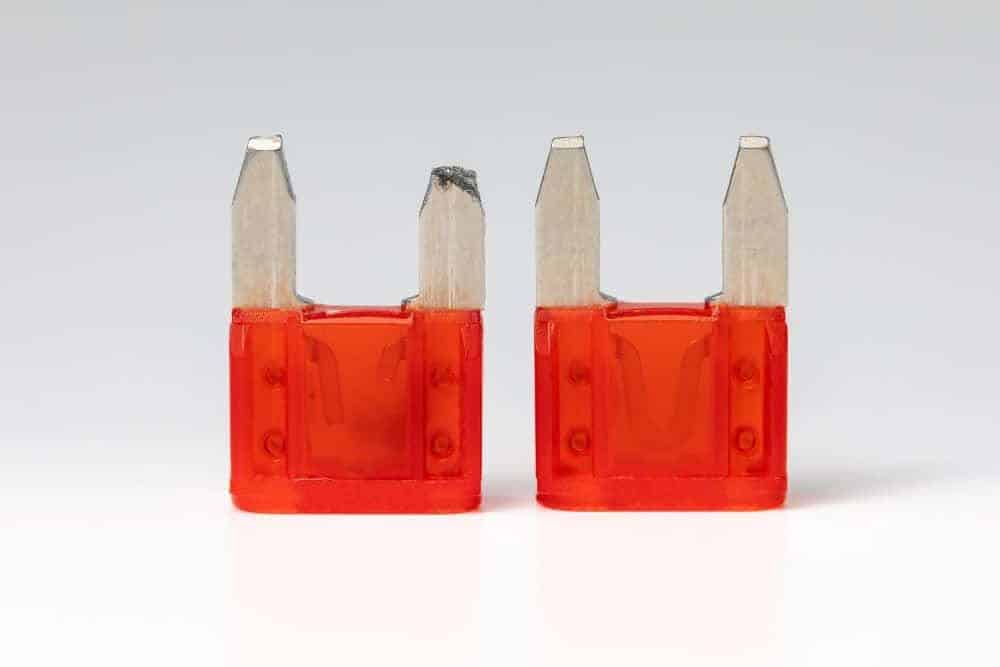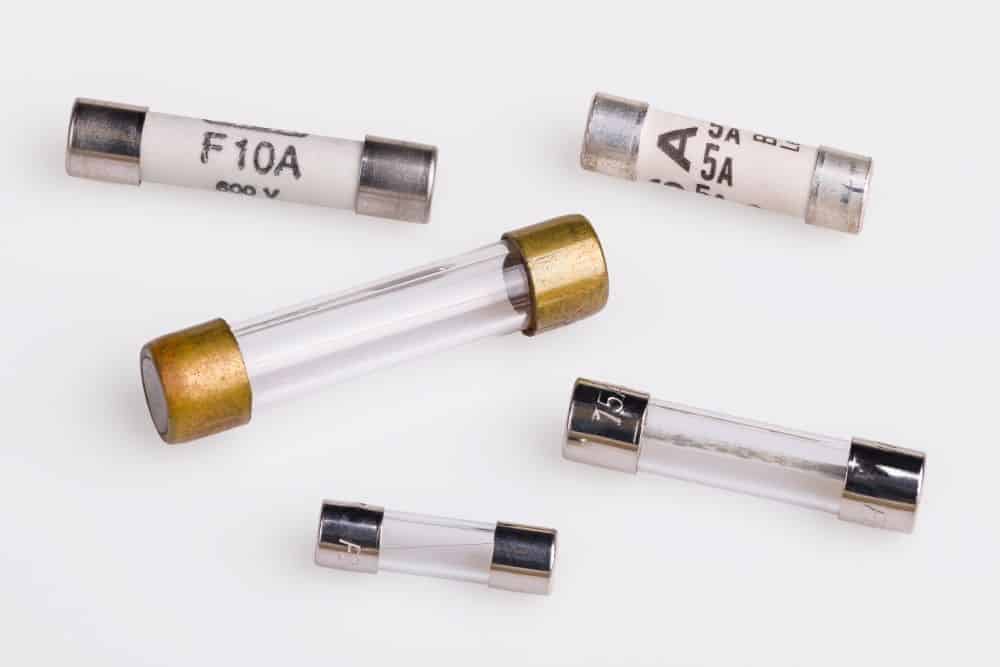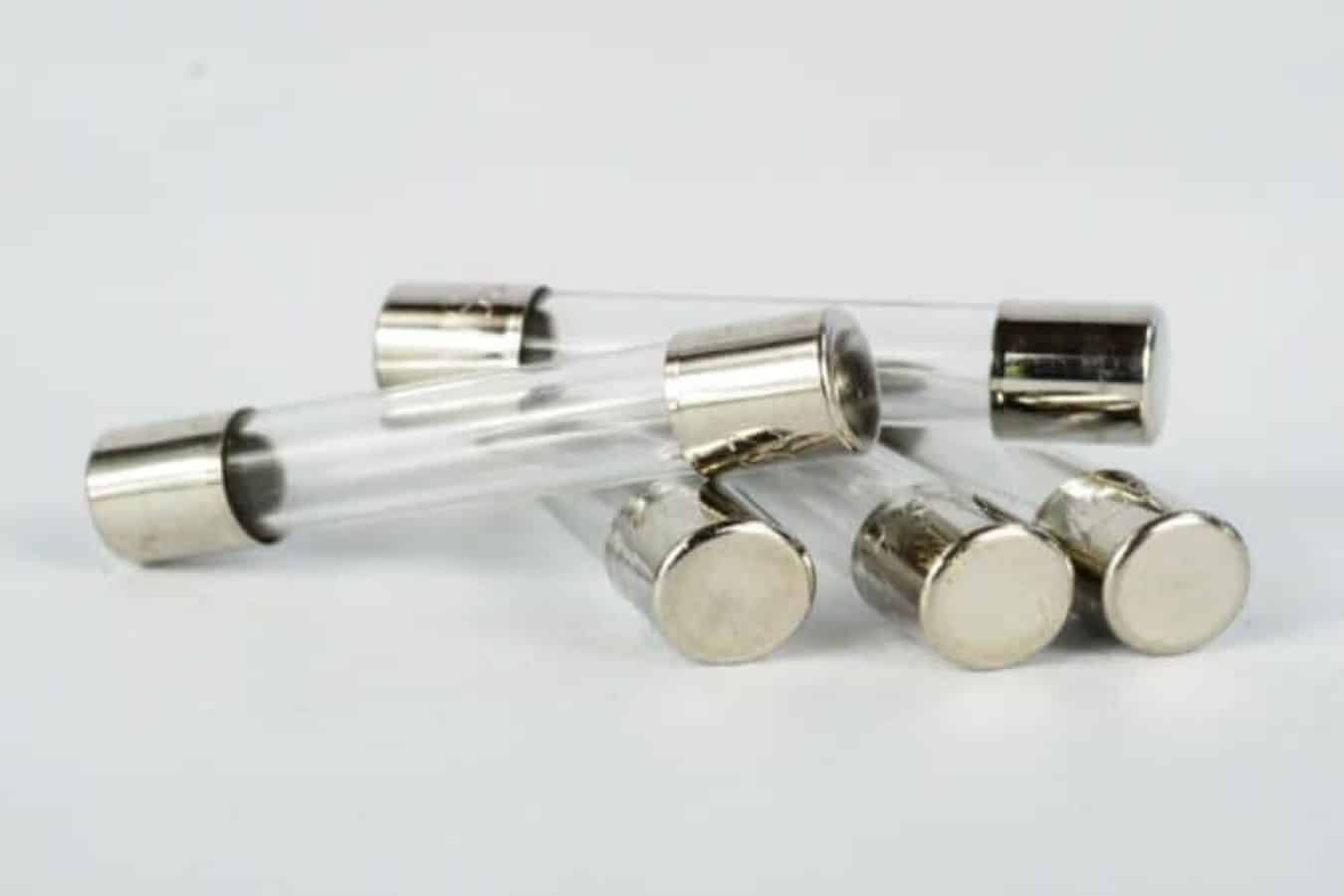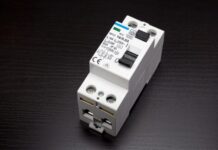Do you need information on a fuse and its use in an electric circuit? Then, read this article on “What is an Electric Fuse?” to get all the required information.
There are various ways to protect an electric circuit against damages due to fault conditions.
However, this article contains every piece of information you need on the electrical fuse and how it operates.
For clarity, I will start this article with an overview of a fuse. Then, I will explain how it works to protect an electric circuit.
Subsequently, the next section will contain the rating of a fuse. After which, I will explain the characteristics of a fuse.
Furthermore, I will state the points to note when choosing a fuse for an electrical system. Thus, in the next section, I will explain the types of fuses. More so, I will state the pros and cons of fuses.
In conclusion, I will give answers to frequently asked questions on fuses.
Meaning OF A Fuse: Overview

In any electrical or electronic system, there are times when situations occur that could be a threat to the circuit.
This could range from faulty current, lightning strikes, sudden voltage increases, etc.
These conditions occur so suddenly that humans cannot control them, and at the same time, they could damage the circuit. Some of them occur as a result of natural phenomena like lightning.
However, every electrical or electronic device has a particular voltage, current, and power rating with which they operate.
Although these devices have certain tolerance levels, the system or circuit might get damaged if the voltage or current exceeds the rating.
Nevertheless, the rated current or voltage is the value of the current and voltage with which the electrical system or circuit operates. The manufacturers determine these values.
To prevent damage to a particular circuit or system, manufacturers install protective devices to avoid damage. These protective devices are of many kinds and operate on different principles.
Therefore, a fuse is a safety device used in an electrical or electronic system to provide an electrical system with protection against overcurrent.
They are often connected in series to the system to protect against overcurrent. When a circuit is overloaded or a short circuit fault occurs, a high current flows through the circuit.
Manufacturers intentionally place a fuse in the circuit so that it will melt and break the circuit when such current flows.
It consists of an element that melts (fuse element) and other materials to quench the arc. These arc-quenching materials could be air, silica sand, or non-conducting liquids.
What Is Electric Fuse: How It Works

Fuses operate according to the heating effect of the current passing through them. It is connected in series to the electrical circuit.
Furthermore, it consists of a fuse element, and a metal strip with a small cross-section.
It connects to the circuit through a pair of electrical terminals. In addition, non-combustible housing encloses the fuse.
The fuse carries all the charge flowing through the conductors in the circuit.
However, the resistance of the fuse element generates heat from the current flowing through it.
More so, the heat that the fusing element produces determines the size and construction of the element.
Even so, when standard current flows through the fuse element, it will not attain a high temperature. Thus, the fuse will not melt to break the circuit.
Nevertheless, if a very high current flows through the circuit, the element’s temperature rises to a higher level.
As a result, the fuse element either melts directly or melts a joint within the fuse to break the circuit.
The fuse element could be a product of zinc, copper, silver, aluminum, or alloys. You can use other metals with stable and predictable characteristics as fusing elements.
Ideally, the fuse should carry its rated current indefinitely and melt quickly when the current is in excess. Even so, minor and harmless current surges do not damage the fuse.
Notably, the fuse element may come in any shape to increase the heating effect. Also, large fuses may have multiple strips of metal that can divide the current.
For instance, a fuse with a dual-element design may contain a metal strip that melts instantly and a low-melting solder joint.
This low-melting solder joint melts due to a long-term overload of low values.
What Is Electric Fuse: Rating Of A Fuse

Although the operation of fuses depends on their self-generation of heat, they are rated in the current unit (amperes). The self-generation of heat results from excessive current through the fuse’s electrical resistance.
However, fuses contribute negligible extra resistance to the circuits they protect. As such, manufacturers make the fuse wire as short as possible.
Nevertheless, the length of the fuse element does not affect the current rating of the fuse. In other words, no matter how long the fusing element is, a certain amount of current will blow it.
Furthermore, the manufacturer needs to consider what happens after the fuse blows. When the fuse blows or melts, there will be a discontinuity in the circuit with full supply voltage at one end.
More so, if the gap is not long enough, a spark may be able to jump from one of the ends of the melted wire to the other. This is due to the electromagnetic field around the conductors due to the current flowing through them.
Even when a gap between the conductors and the circuit is open, the current still flows. Thus, manufacturers also rate fuses in terms of voltage capacity.
In addition, semiconductor fuses open very quickly when overcurrent flows through the system. These fuses are used to protect semiconductors.
Some semiconductor materials, like transistors, are intolerant of overcurrent conditions and need a fuse that operates very fast. Hence, the semiconductors operate faster than the conductor fuses.
For a fuse to operate, connect it to the load’s hot (live or positive) side to de-energize the circuit.
What Is Electric Fuse: Characteristics Of Fuses

The following are some important characteristics of fuses in electrical and electronic systems:
Current Rating
The current rating of an electrical fuse is the maximum amount of current that can pass through the fuse. It is a numerical value describing the current amount of fuse that can be carried without melting.
Voltage Rating
The voltage rating of the fuse must be the same as or higher than the open-circuit voltage. The open-circuit voltage is the voltage at the terminals of a circuit when the circuit is open.
I2t Rating
This is the amount of electrical energy the element can carry when fault current flows through it. The I2t rating measures the heat energy flowing through the fuse.
Thus, this energy is produced when the fuse is blown.
Breaking Or Interrupting Capacity
The breaking capacity of a fuse is the maximum fault current a fuse can safely blow without explosion, breakage, or fire. This fault current could result from a short circuit, overload, etc.
However, the high and low breaking capacity ratings range from 35A to 10kA. The final product’s short circuit condition determines the fuse’s breaking capacity.
Voltage Drop
When current flows through a circuit, voltage drops occur. This is because of the resistance of the conductors in the circuit. The fuse also drops the voltage.
However, when the current flows through the fuse, its resistance and voltage drop constantly as the temperature rises. When excess current flows, the element melts and breaks the circuit.
As a result of the change in resistance, the voltage drop will reduce.
Time-Current Characteristics
The time-current characteristics describe the speed at which a fuse operates. This speed depends on the current that flows through the material.
However, the manufacturers designed the fuse to have specific operating time characteristics concerning current.
As a result, the fuse type is determined by load characteristics.
Temperature
The temperature of the environment can change the operational parameters of the fuse. For example, if a fuse has a rating of 1 ampere at 25 degrees Celsius, it may conduct up to 10% more current at 40 degrees Celsius.
Operating Time
The total operating time of a fuse is the algebraic sum of the pre-arcing time and the arcing time.
However, the pre-arcing time is the duration from when the short circuit starts to when the element melts.
Also, the arcing time is from when an arc is initiated due to breaking the circuit to when the arc is extinguished.
Typically, the operating time of a fuse should be around 2 milliseconds, that is, 0.002 seconds.
Fusing Current
This is the minimum current that can melt the element. Also, it is always greater than the current rating of the fuse.
Cut-Off And Fusing Factor
The cut-off factor is the fuse’s duration to interrupt the circuit when a fault occurs. Ideally, this cut-off factor should be in milliseconds.
On the other hand, the fusing factor is the ratio of the fusing current to the current rating of a fuse.
What Is Electric Fuse: How To Select Fuses

While selecting fuses, the following are the things you should consider:
- Go through the appliance manual to determine the power of the appliance.
- Determine the voltage rating, which must be higher than the circuit voltage for proper protection.
- Select time-delay fuses for inductive loads. In the case of resistive loads, select fast-acting fuses.
- After calculating the fuse rating, choose the highest fuse rating available. If your calculated fuse rating value is 5.341 amperes, use a 6-ampere fuse.
However, to calculate the fuse rating, use the formula below.
Fuse rating = ( P/V) * 1.25.
Where:
P = power rating of the appliance in watts.
V = voltage rating in volts.
What Is Electric Fuse: Types Of Fuse

Generally, the two types of fuse are DC fuses and AC fuses.
DC Fuses
The DC circuit utilizes DC fuses. Generally, DC fuses are larger than AC fuses.
In addition, this fuse has a constant value above zero volts to avoid easily neglecting and turning off the circuit.
More so, it is possible to have an electric arc between melted wires. Thus, electrodes are placed at reasonable distances to prevent the arc.
This results in an increased number of DC fuses.
AC Fuses
Contrary to the DC types, AC fuses are smaller in size. They oscillate about 60 times from minimum to maximum voltage every second.
Hence, there is no chance of having an arc between melted wires. As such, you can have them in smaller sizes.
However, AC fuses have two categories: low-voltage and high-voltage fuses. Low voltage fuses apply to low voltage lines and appliances, while high voltage fuses apply to high voltages.
AC Fuse: Low Voltage Fuses
Cartridge Types
The cartridge fuse types include a container enclosing a metal wire contact in the glass. The two types of cartridge fuses are D-type and link-type fuses.
D-type Cartridge Fuse consists of a cartridge, cap, fuse base, and adapter ring. The fuse cap is mounted on the base.
More so, the base fits with the element in the cartridge through an adapter ring. When the tip of the cartridge comes in contact with the conductor, the fuse starts working.
Link-type Cartridge Fuse consists of ceramic, silver, and porcelain, which control the arc produced by the blown fuse. Even so, they allow current to flow under normal conditions.
Also, the element container is filled with silica sand. Another name for the cartridge fuse is the High Breaking Capacity (HRC) fuse.
Cartridge fuses are of the blade or plug-in type and the bolted type.
The blade or plug-in type has a body made of plastic. You can easily replace it in a circuit without any load.
On the other hand, the bolted type consists of conducting plates fixed to the fuse base.
Rewireable Fuse
In a rewireable fuse, you might not need to change the entire fuse when it blows due to overcurrent.
This is because it consists of an insulated body, making it easy to remove even when current flows through it.
However, due to its insulated body, you can remove it without electrocution or injury. It has a base made of porcelain that acts as an incoming and outgoing terminal.
Even so, its fuse carrier holds the fuse element, which could be made of copper, aluminum, lead, tin, etc. You can also refer to a rewireable fuse as a kit-kat fuse.
Striker Type Fuse
The striker fuse is useful for tripping and closing circuits. This is due to their large displacement and the force they exert.
Switch Type Fuse
The switch-type fuse consists of a fuse element enclosed in a metal switch. They are often applied to low and intermediate voltage levels.
Drop Out Fuses
This type of fuse is used to protect outdoor transformers. When the fuse melts, its element drops from its lower support due to gravity.
AC Fuses: High Voltage Fuses
High-voltage fuses protect electrical systems from high voltages ranging from about 1.5 kV to 138 kV. They protect electrical equipment like transformers.
They are products of silver, copper, and tin. Also, they contain boric acid, which produces a high amount of gases, which is why they are useful for outdoor purposes.
The three types of high-voltage fuses are:
Cartridge HRC Fuse
The cartridge HRC fuse is similar to its low-voltage version. What distinguishes them are the additional features.
This fuse consists of a fuse element with a bi-metallic thermal control and filling powder. A brass end cap and cartridge enclose the fuse element and the filling powder.
It has a fuse link contact that connects with the fuse element through an outer element. This fuse link contact serves as a terminal for the fuse.
Liquid HRC Fuse
This fuse applies to circuits with current and voltage ratings up to 100A and 132kV, respectively. It consists of a glass tube that contains tetrachloride.
One of its ends is packed, and the other is fixed with phosphorus bronze wire. A liquid extinguishes the arc during operation, increasing its short-circuit capacity.
Expulsion HRC Fuse
The expulsion HRC fuses produce the expulsion effect of gases by internal arcing to interrupt current. More so, boric acid for expulsion gases fills the fuse link chamber.
It provides protection for feeders and transformers.
What Is Electric Fuse: Pros And Cons Of A Fuse

Pros
- They terminate overload and high current.
- Also, they prevent electrical faults.
- Even so, they reduce electrical hazards.
- Furthermore, they save on the cost of repairing appliances.
- In addition, a fuse is cheap and easy to replace.
- They are portable.
- Lastly, they do not require additional care or maintenance.
Cons
- You can only use them once.
- It requires features of reversible time-current for overload safeguarding.
- Also, the time-current feature does not always synchronize with the safeguarding element.
What Is Electric Fuse: Frequently Asked Questions

It is a safety device in an electrical circuit that protects against high currents.
The fuse wire protects the electrical system from the sudden increase in the current flowing through the circuit. This might damage the electrical system.
It plays a vital role in protecting an electrical circuit. It operates to prevent overcurrent.
Generally, a fuse is made of an alloy of tin and lead.
A good fuse should have a low melting point, high conductivity, and very low deterioration due to oxidation.
A fuse is a metal piece that melts when an overcurrent flows through it. Hence, it can not be useful after its operation once.
On the other hand, the circuit breaker operates by tripping when a fault occurs. Thus, you can use it again after a fault.
No.
A fuse is a conductor.
The connection of a fuse to an electric circuit is in series.
Fuses are generally of two broad types, AC fuses, and DC fuses.
AC uses AC fuses, while DC uses DC fuses.
A fuse is a conductor with a low melting point.
My Final Thoughts On The Meaning Of A Fuse

This article has all the details you need on the electrical fuse. Hence, by reading through it, you have gotten every information you need on fuses.
Its application in electrical circuits covers a wide range. Thus, its benefits are not arguable.
However, this article on the Meaning Of A Fuse explains every detail. Thus, try to open every link in this article to get all the details.
I hope you found this article helpful to you. Then, kindly fill out the “Leave A Reply” form to share your thoughts.
You can as well read other interesting articles on our website by clicking on the pages below.




